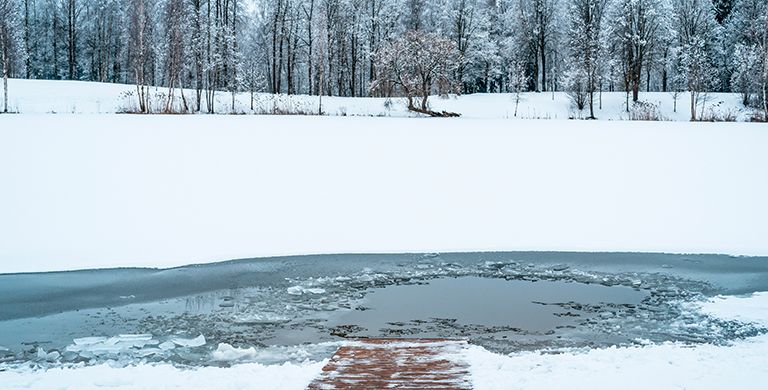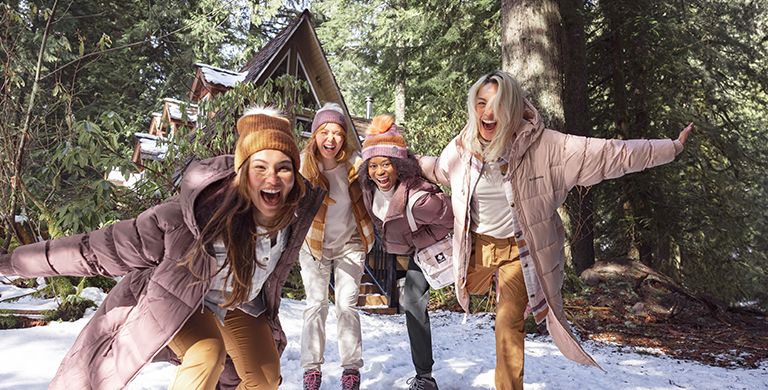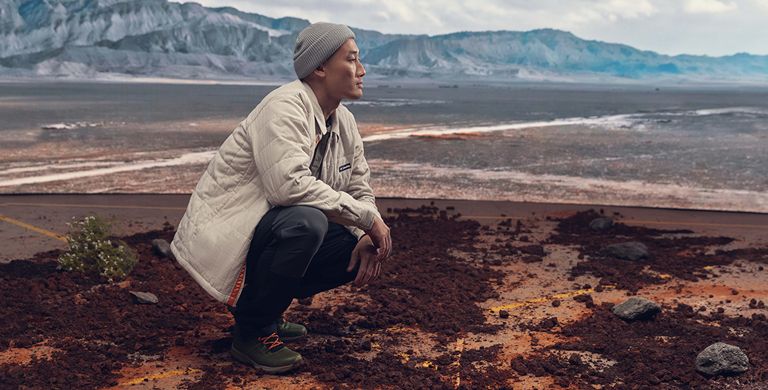OUTDOOR LIFE
How to Layer Outdoor Clothes for Any Situation
From hiking to skiing to travel, learn the basics of layering for all-day comfort and protection
BY TROY ASPLUND
TABLE OF CONTENTS:
Whatever you’re doing outside, layering is the secret to being able to stay out there longer. But what’s the proper way to layer clothes? Each outdoor activity is different so it can be tricky to know how to dress and pack for various situations. Whether you’re skiing down a snow-covered slope, running along a mountain trail, or trekking around a foreign city, they all require their own layering strategy. This guide will outline the benefits of layering in more detail and help you figure out the perfect layering strategy to keep you comfortable no matter what adventures lie ahead.

Principles of layering
Layering is about adapting to the conditions—both unpredictable weather conditions as well as your changing outdoor activity level. Different activities and different weather conditions require different layering solutions. Knowing how to layer properly will help you stay prepared for whatever comes your way.
Regardless of activity, layering usually involves a three-layer system consisting of the following items of clothing:
Regardless of activity, layering usually involves a three-layer system consisting of the following items of clothing:
- Baselayer – A thin, synthetic layer that sits directly on the skin, the main objective of the baselayer is to wick away moisture and manage sweat to help keep you dry.
- Midlayer – An insulating layer that provides warmth, midlayer clothing typically consists of a fleece, knit, or puffer jacket, leading some to refer to it as the down layer.
- Outer shell – A barrier between you and the weather, the outer shell layer is intended to block rain, snow, wind, sleet, or any other weather elements you encounter.
Layering for cold weather
Cold weather is what most people think of when it comes to dressing in layers. But layering clothes for winter isn’t just about keeping you warm. It’s also about making sure you’re not overly warm. And that starts with the right baselayer, the foundation of dressing for cold weather. Not only does the baselayer keep you dry by wicking away sweat with technologies like Omni-Wick™, the best winter baselayers also keep you warm with the addition of heat-reflective technologies.
Your midlayer is where the majority of your insulating warmth comes from, whether that be from a fleece or puffer jacket. For fleece, look for technologies like Omni-Heat™ Helix, which uses tiny performance heat cells to add extra warmth. If you’d prefer to take the puffer jacket route, consider one featuring Omni-Heat™ Infinity, a NASA-inspired technology that reflects body heat back to you with a special gold liner.
While the midlayer is about keeping heat in, your outer layer is about keeping the elements out—snow, sleet, wind, rain, etc. In extra wet climates, jackets made with fully waterproof, breathable OutDry™ Extreme will offer maximum rain protection for your outer layer. In extra cold climates, you may want to consider an outer layer with Black Dot technology, especially if you’re participating in lower-intensity activities. (Black Dot jackets may be too warm for higher-intensity activities).
Your midlayer is where the majority of your insulating warmth comes from, whether that be from a fleece or puffer jacket. For fleece, look for technologies like Omni-Heat™ Helix, which uses tiny performance heat cells to add extra warmth. If you’d prefer to take the puffer jacket route, consider one featuring Omni-Heat™ Infinity, a NASA-inspired technology that reflects body heat back to you with a special gold liner.
While the midlayer is about keeping heat in, your outer layer is about keeping the elements out—snow, sleet, wind, rain, etc. In extra wet climates, jackets made with fully waterproof, breathable OutDry™ Extreme will offer maximum rain protection for your outer layer. In extra cold climates, you may want to consider an outer layer with Black Dot technology, especially if you’re participating in lower-intensity activities. (Black Dot jackets may be too warm for higher-intensity activities).
Layering for warm weather
While surprising to some, layers are just as important for keeping you comfortable in warm temperatures as they are in colder temperatures. The difference is that when it comes to spring or summer, layers are more about protecting you from sun, heat, and sweat—and of course, the occasional rain shower or windstorm.
As is the case in cooler conditions, outdoor comfort starts with your baselayer in warmer weather as well. You want something with UPF-rated fabric to protect you from the sun, and breathable, moisture-wicking materials (ideally featuring Omni-Wick™ technology) to help manage your sweat. Omni-Shade™ in particular has been shown to be more effective than sunscreen when used as a baselayer to protect you from sunburn and skin damage.
In extra hot climates, you can benefit from additional cooling technologies like Omni-Freeze™ ZERO ICE to prevent overheating.
An insulation midlayer might not be quite as vital when layering for summer, but having a lightweight fleece or vest stashed in a backpack can be just the thing to combat an early-morning or late-evening chill. And while an outer shell isn’t always needed in spring or summer weather, warm doesn’t always mean dry. So you always want to keep a lightweight rain jacket or windbreaker handy should a storm suddenly kick up.
As is the case in cooler conditions, outdoor comfort starts with your baselayer in warmer weather as well. You want something with UPF-rated fabric to protect you from the sun, and breathable, moisture-wicking materials (ideally featuring Omni-Wick™ technology) to help manage your sweat. Omni-Shade™ in particular has been shown to be more effective than sunscreen when used as a baselayer to protect you from sunburn and skin damage.
In extra hot climates, you can benefit from additional cooling technologies like Omni-Freeze™ ZERO ICE to prevent overheating.
An insulation midlayer might not be quite as vital when layering for summer, but having a lightweight fleece or vest stashed in a backpack can be just the thing to combat an early-morning or late-evening chill. And while an outer shell isn’t always needed in spring or summer weather, warm doesn’t always mean dry. So you always want to keep a lightweight rain jacket or windbreaker handy should a storm suddenly kick up.

How to layer for hiking or backpacking
Knowing how to properly layer your clothing for hiking can be the difference between a successful adventure and having to head home early. Especially for hiking and backpacking, one of the keys to layering is bringing things you can easily get on and off, depending on the conditions. With limited backpack space, you want every piece of clothing to count, which is exactly what layering is all about.
The three-layer rule of layering definitely applies when it comes to winter hiking or backpacking, although the layers will be longer, thicker, and warmer. For your baselayer, opt for something similar to what you’d choose for skiing to wick moisture away from your skin. Then add an insulating hiking midlayer, either a fleece or puffer jacket, ideally with body-heat-reflective technologies like Omni-Heat™ Infinity for optimal warmth. And lastly, top it off with a waterproof and windproof outer shell to protect you from wind, rain, and any other elements you may cross paths with.
Warm-weather hiking requires the same three layers, starting with a sweat-wicking baselayer. The warmth of a midlayer might seem unnecessary for hiking through the heat of the day, but don’t forget about the coolness of early mornings and late evenings. Believe us, a fleece, vest, or even a light puffer are more than worth the pack space. And a lightweight rain jacket that can pack into its own pocket will hardly take up any space either. So in the name of proper layering for backpacking, we say bring both.
For more detailed information on hiking-specific layering techniques, check out “How to Layer For Hiking.”
The three-layer rule of layering definitely applies when it comes to winter hiking or backpacking, although the layers will be longer, thicker, and warmer. For your baselayer, opt for something similar to what you’d choose for skiing to wick moisture away from your skin. Then add an insulating hiking midlayer, either a fleece or puffer jacket, ideally with body-heat-reflective technologies like Omni-Heat™ Infinity for optimal warmth. And lastly, top it off with a waterproof and windproof outer shell to protect you from wind, rain, and any other elements you may cross paths with.
Warm-weather hiking requires the same three layers, starting with a sweat-wicking baselayer. The warmth of a midlayer might seem unnecessary for hiking through the heat of the day, but don’t forget about the coolness of early mornings and late evenings. Believe us, a fleece, vest, or even a light puffer are more than worth the pack space. And a lightweight rain jacket that can pack into its own pocket will hardly take up any space either. So in the name of proper layering for backpacking, we say bring both.
For more detailed information on hiking-specific layering techniques, check out “How to Layer For Hiking.”
How to layer for fishing
There are plenty of things that layering your clothes while fishing can protect against year-round, but a particularly important one is damaging ultraviolet rays. Whether you’re casting in full sun or overcast skies, a baselayer made with Omni-Shade™ Broad Spectrum sun protection not only protects against skin damage, it has been proven to provide better UPF protection than sunscreen. And when that baselayer also includes moisture-wicking Omni-Wick™, you have added protection against sweat buildup.
A fleece midlayer is the perfect way to fight the chill of an early-morning start or some late-evening fishing. To keep yourself warm through the cooler months, trade that fleece for a puffer jacket featuring the warmth of body-heat-reflecting Omni-Heat™ Infinity.
And whether it’s falling from above or splashing up from below, fishing definitely has no shortage of water. So protect yourself from all angles with an outer shell that features OutDry™ Extreme for breathable, waterproof dryness, cast after cast.
A fleece midlayer is the perfect way to fight the chill of an early-morning start or some late-evening fishing. To keep yourself warm through the cooler months, trade that fleece for a puffer jacket featuring the warmth of body-heat-reflecting Omni-Heat™ Infinity.
And whether it’s falling from above or splashing up from below, fishing definitely has no shortage of water. So protect yourself from all angles with an outer shell that features OutDry™ Extreme for breathable, waterproof dryness, cast after cast.

How to layer for skiing
Making sure your last run is as warm and dry as your first is all about knowing how to layer for extreme cold. Stopping the cold starts with the right insulating midlayer, whether a fleece or puffer jacket. And if it’s snowing or you tend to spend a considerable amount of time on the snow-covered ground, an outer shell or jacket is also a must. Think of it as layering for mountaineering. The thing that’s unique about skiing is its mix of activity and non-activity. One minute you’re working up a sweat while carving your way through a mogul field, and the next minute you’re sitting completely still on a chairlift that’s taking you back up a wind-swept mountain. That makes moisture management as critical to your comfort as anything else, because damp clothes and cold wind make for total misery. So choose your baselayer wisely. Never anything cotton and always something with technologies that wick away sweat and hold in your body heat.
For late-season spring skiing, a sweat-wicking baselayer is obviously important, but consider looking for added technologies like Omni-Shade™ Sun Deflector to protect your skin from the sun reflecting off the snow. You may not need an insulating midlayer or protective outer shell for much of the day, or even at all in warmer weather. But early mornings can be chilly and mountain conditions can change in an instant, so just to be safe, we’d suggest keeping both a midlayer and shell in a locker or even in your car.
For late-season spring skiing, a sweat-wicking baselayer is obviously important, but consider looking for added technologies like Omni-Shade™ Sun Deflector to protect your skin from the sun reflecting off the snow. You may not need an insulating midlayer or protective outer shell for much of the day, or even at all in warmer weather. But early mornings can be chilly and mountain conditions can change in an instant, so just to be safe, we’d suggest keeping both a midlayer and shell in a locker or even in your car.
How to layer for trail running
The constant when it comes to trail running is exertion, which is why the key to layering for running, no matter the conditions, is a good synthetic baselayer with sweat-wicking capabilities. In colder weather, also look for the addition of body-heat-reflecting technologies to keep you warm. And for warmer conditions, you’ll want a baselayer that includes both cooling and UV-blocking technologies to defeat the heat and sun. Your exertion level can also make it difficult to know how much warmth you’ll need from an insulating layer, especially when you’re trying to decide before you’ve started to warm up. So when in doubt, we suggest over-layering and bringing a small running pack to store layers when they aren’t needed.
Another challenge of layering for trail running is the variety of conditions you can encounter, regardless of season. Changes in elevation can come with significant changes in temperature. And you can go from the cooler temperatures of a tree-protected trail to being completely exposed to the elements above the treeline in a matter of minutes. The solution to this constant change and unpredictability? You guessed it, layering.
Another challenge of layering for trail running is the variety of conditions you can encounter, regardless of season. Changes in elevation can come with significant changes in temperature. And you can go from the cooler temperatures of a tree-protected trail to being completely exposed to the elements above the treeline in a matter of minutes. The solution to this constant change and unpredictability? You guessed it, layering.
How to layer for travel
Knowing how to dress in layers for travel is the perfect clothing strategy for conquering the unpredictability of travel. With a few carefully selected items, you’re ready for just about anything that comes at you while you’re away from home, from an overly air-conditioned airplane cabin to a sudden downpour in the midst of exploring a far-off city. Choosing easy-to-pack clothing options like lightweight baselayers and packable rain jackets is also the perfect way to make the most of the limited packing space in a suitcase or even a carry-on.
Ready to layer up for your next adventure? Shop Columbia Sportswear’s layering collection.



